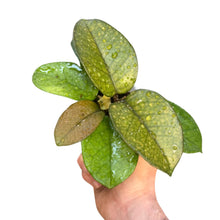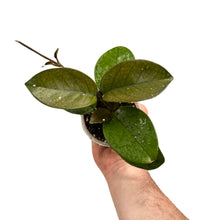Hoya fungii is part of the Apocynaceae family and its native range is China (Yunnan to Guangdong) to Indo-China. This epiphytic plant produces large leaves which are covered in soft hairs. Dale Kloppenburg described the colour as "... a medium deep emerald-green, set off with very dark green venation." New leaves are lighter green with a slight bronze colour, stems are purple-bronze. Hoya fungii are tolerant to colder temperatures.
Blooms emerge in a globular cluster with up to 60 flowers, they are usually pink in colour and the vibrancy is determined by the temperatures under which they develop and other environmental factors.
Genus name is new Latin, named after Thomas Hoy ( c. 1750– c. 1821), English gardener.
9cm potted plant in a coco husk plug with coco coir, coco chips, perlite and pine bark. We do not recommend removing the plant from the coco husk plug.
The picture shown is an example of what's in stock. You will receive a plant as close to the picture and description as possible.
Light: Bright indirect light, meaning the plant sees the sun for 0-4 hours per day - this could be through trees or a translucent curtain, it’s important for the plant to see the sky in order to thrive. Hoya fungii would appreciate 1-2 hours of direct light.
Water: Allow the majority of the mix to dry out as the mix is traditionally quite chunky, water will usually flow through quite easily. Be sure to thoroughly moisten the substrate. Pour water slowly over the top of the substrate and allow the water to pass through the drainage holes.
Potting mix: A chunky well draining mix composed of coco coir, perlite or vermiculite, orchid bark, sphagnum moss and worm castings; you could also add some horticultural charcoal to this epiphytic mix.
Fertilising: Feed your plant every few waterings during the growing season or when you observe active growth. You can dilute fertiliser to half the recommended amount but never add more.
Temperature: 10-25˚C.
Humidity: Hoya would prefer higher humidity, between 60-80% but do well to adapt to average home humidity. You can increase humidity by placing the plant on a watered pebble tray or using a humidifier.
Hoya aren’t considered toxic, however, they may make your pet or child vomit if ingested, keep out of reach just to be safe.
For further information about Hoya, check out our blog.



